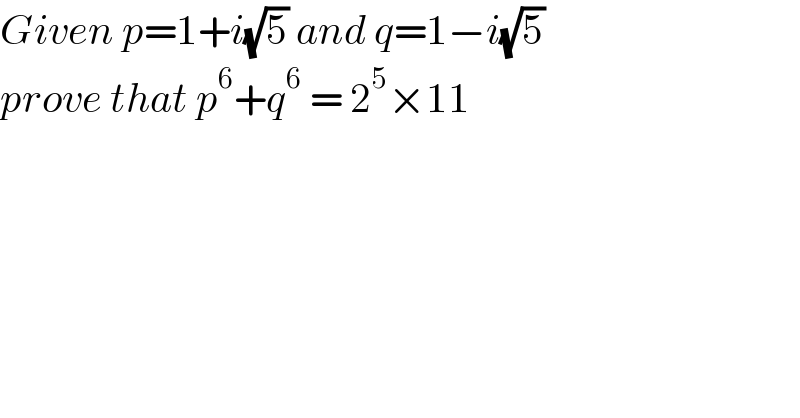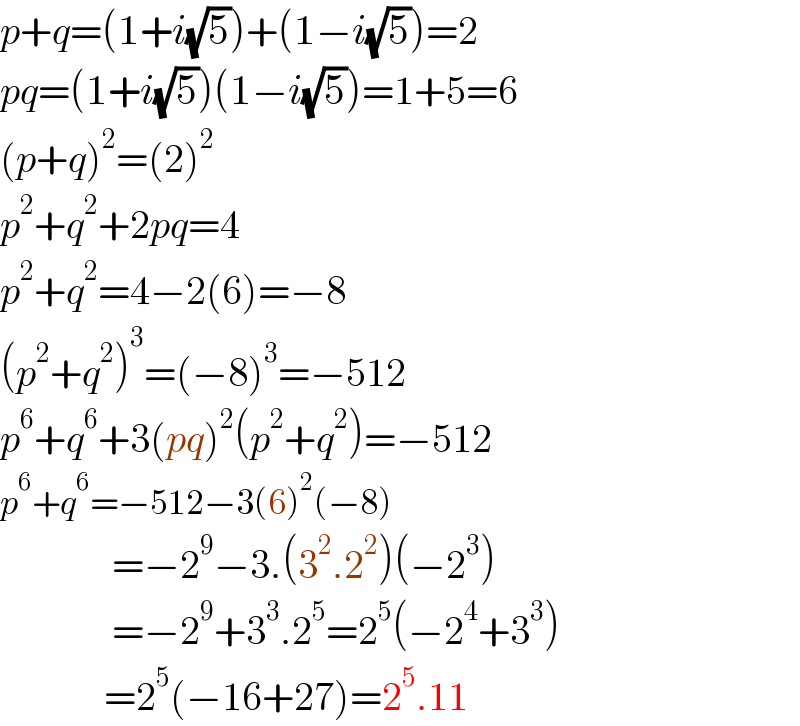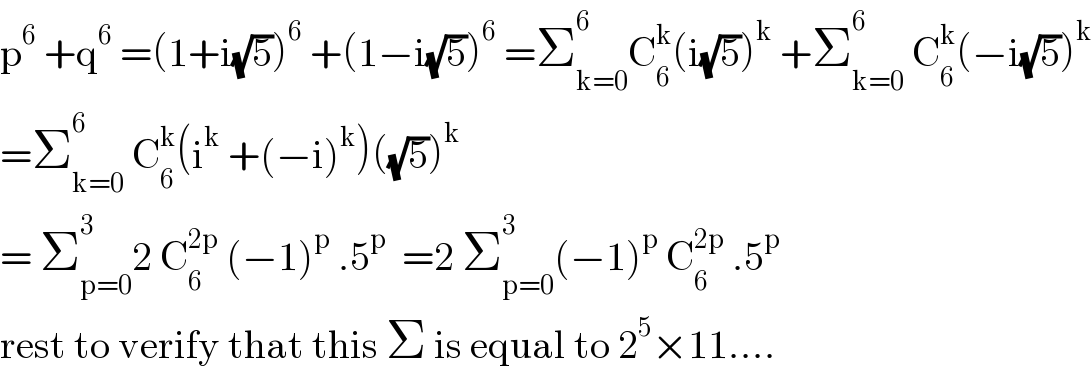Question Number 138014 by bobhans last updated on 09/Apr/21

Answered by bobhans last updated on 09/Apr/21
![from the given we have ⇒x^2 −2x+6 = 0 has the roots { ((x_1 = p=1+i(√5))),((x_2 = q =1−i(√5))) :} ⇒by Vieta′s rule { ((p+q=2)),((pq = 6)) :} we want to find p^6 +q^6 . (p^3 )^2 +(q^3 )^2 = [ p^3 +q^3 ]^2 −2(pq)^3 = [ (p+q)^3 −3pq(p+q)]^2 −2(pq)^3 = [ 8−3(6)(2)]^2 −2(6)^3 = [ −28 ]^2 −2(216) =784−432 = 352 = 2^5 ×11](https://www.tinkutara.com/question/Q138015.png)
Commented by bobhans last updated on 09/Apr/21

Commented by SLVR last updated on 09/Apr/21

Answered by Rasheed.Sindhi last updated on 09/Apr/21

Answered by mathmax by abdo last updated on 10/Apr/21

